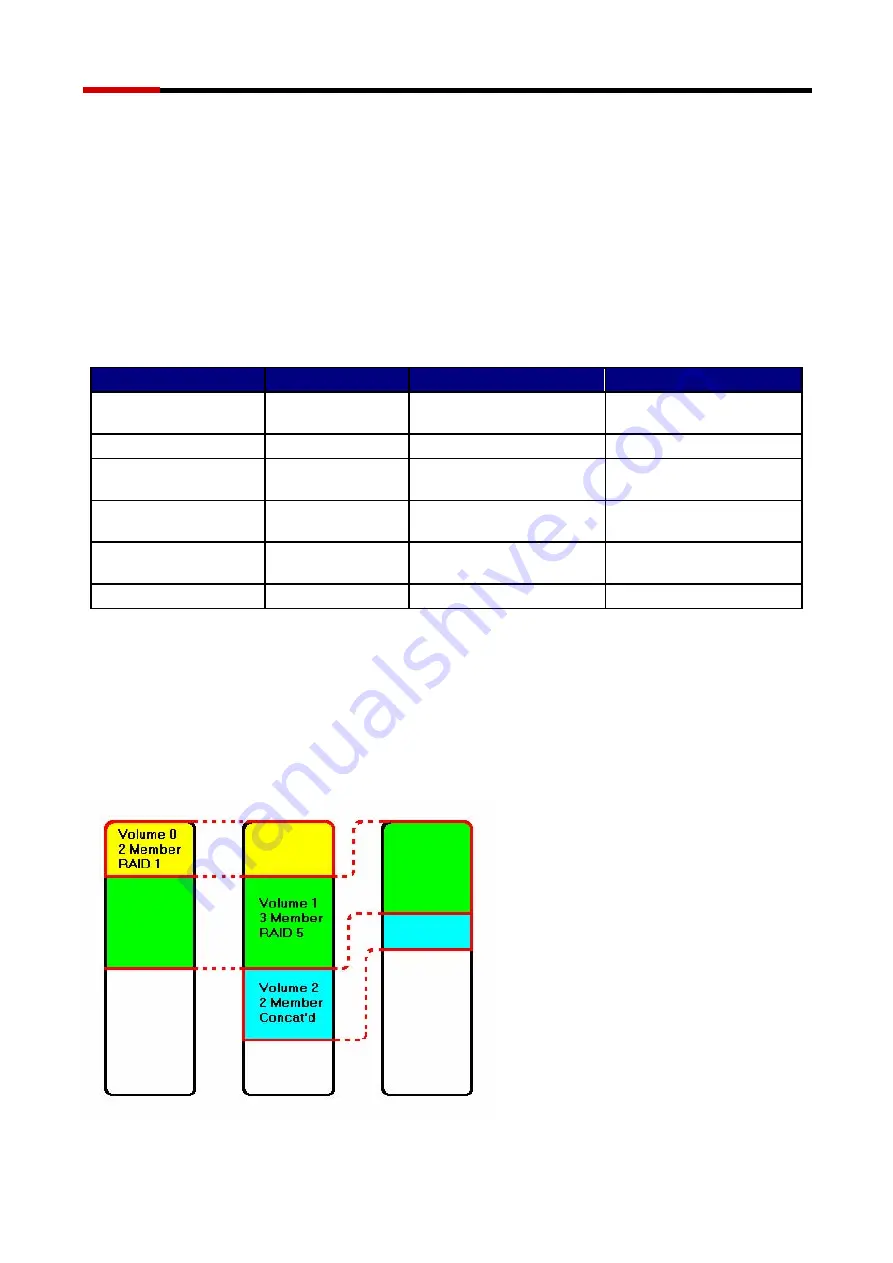
Server
RSV-S8 User Manual
2 AN INTRODUCTION TO RAID
2.1 RAID VOLUMES
RAID technology allows one or more disks to be combined into a logical volume which provides greater
performance and/or protection than standard disk drives. These volumes, also known as RAID Groups,
appear like regular disk drives to the operating system and can be partitioned, formatted and used just like
any other normal disk. The complexity of the RAID is hidden within the driver.
There are several different methods of combining disks, each with its own advantages and disadvantages.
Each method is referred to as a RAID “level” such as RAID 1, or RAID 5. The details of each level are
summarized below and detailed in the following sections.
RAID LEVEL
CONFIGURED AS
ADVANTAGES
DISADVANTAGES
0
Striped
Excellent performance,
low cost
No data protection
1
Mirrored
Excellent data protection
High cost
10
Mirrored Striped
High performance,
excellent data protection.
High cost.
5
Parity RAID
Good data protection,
good value
Some performance
degradation for writes.
Combination
Concatenated
Good performance, low
cost, large Volume size
No data protection
Single Drive / Segment Contiguous
Same as single disk
Same as single disk
2.2 SEGMENTING DISKS
For increased versatility, the SATARAID5 software allows individual disks to be divided into smaller
segments which can then be combined into different volumes. As an example, if a user has one set of
data that must be protected at all costs, another set of data which should be protected at reasonable cost
and another set that doesn’t need any protection at all; the user can divide three disks into sections as
shown in Figure 1. The yellow regions define the high security volume, the greem section is the middle
security volume and the light blue shows the unprotected area.
Figure 1: Dividing Disks into Members
5
Summary of Contents for RSV-S8
Page 1: ...Server RSV S8 User Manual...







































